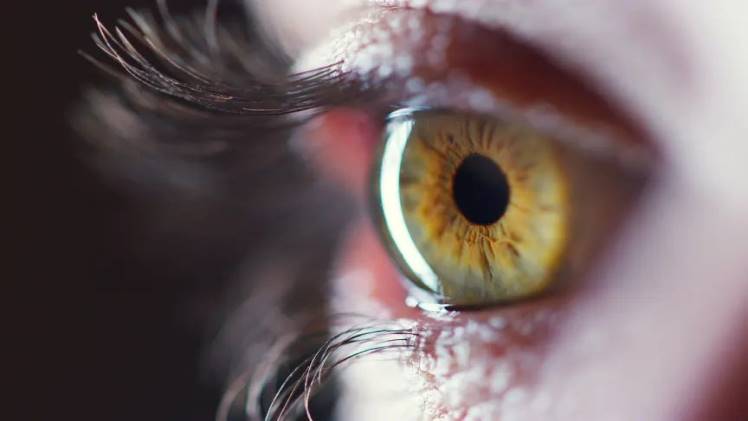The Aging Eyes: Understanding Changes and Caring for Vision in Later Years – Dr. Zuhal Butuner

As we age, our bodies undergo various changes, and our eyes are no exception. Vision changes and eye-related conditions become more common as we grow older, highlighting the importance of proactive eye care and regular check-ups. In this article, along with Dr. Zuhal Butuner we explore the effects of aging on the eyes, common age-related eye conditions, and practical tips for maintaining healthy vision throughout the golden years.
-
Presbyopia: The Aging Eye’s Close Companion
Presbyopia is a natural age-related condition that affects the eye’s ability to focus on close objects. It typically becomes noticeable around the age of 40 and progressively worsens with time. As the lens loses flexibility, reading small print, sewing, or performing tasks requiring close vision becomes challenging. Presbyopia is typically corrected with reading glasses, bifocals, multifocal lenses, or contact lenses designed for near vision.
-
Cataracts: Clouding the Vision
Cataracts are another common age-related eye condition. They occur when the lens of the eye becomes cloudy, causing blurred or hazy vision. Cataracts may develop slowly over time, gradually impacting visual clarity. Surgery is often recommended to remove cataracts and replace the clouded lens with an artificial one, restoring clear vision.
-
Age-Related Macular Degeneration (AMD): Threatening Central Vision
Age-Related Macular Degeneration (AMD) affects the central part of the retina (macula), which is responsible for sharp, detailed vision. AMD can lead to a loss of central vision, making activities such as reading, driving, and recognizing faces difficult. While there is no cure for AMD, early detection, lifestyle modifications, and treatment options like injections or laser therapy can help slow its progression and preserve vision.
-
Glaucoma: Silent Thief of Sight
Glaucoma is a group of eye conditions that damage the optic nerve, leading to vision loss. It often develops slowly and painlessly, earning its reputation as the “silent thief of sight.” Regular eye exams are crucial for early detection and treatment to prevent further damage. Treatments for glaucoma may involve eye drops, oral medications, laser procedures, or surgery, depending on the severity.
-
Dry Eyes: The Uncomfortable Consequence
Dry eyes occur when the eyes do not produce enough tears or when tears evaporate too quickly. Aging can exacerbate dry eye symptoms, causing discomfort, redness, and blurred vision. Artificial tears, lifestyle adjustments, and the use of humidifiers can help alleviate dry eye symptoms.
-
Tips for Maintaining Healthy Vision in Later Years
- Regular Eye Exams: Schedule comprehensive eye exams at least once every two years, or as recommended by your eye care professional. These exams can detect early signs of eye conditions and ensure timely intervention.
- Good Nutrition: Maintain a diet rich in nutrients beneficial to eye health, including omega-3 fatty acids, vitamins C and E, and zinc. Leafy greens, fish, citrus fruits, nuts, and seeds are excellent additions to a vision-friendly diet.
- Protect from UV Rays: Wear sunglasses with UV protection when outdoors to shield the eyes from harmful ultraviolet (UV) rays. Look for sunglasses that block 100% of UVA and UVB rays.
- Quit Smoking: Smoking can increase the risk of developing age-related eye conditions such as cataracts and AMD. Quitting smoking has multiple health benefits, including protecting your eyes.
- Monitor Blood Pressure and Blood Sugar: High blood pressure and diabetes can impact vision health. Manage these conditions through a healthy lifestyle, regular check-ups, and medication, if necessary.
- Practice Good Eye Hygiene: Avoid rubbing your eyes, as this can cause irritation or damage. Wash your hands regularly and remove any makeup before bedtime to reduce the risk of eye infections.
- Limit Screen Time: Take regular breaks from digital screens, as prolonged screen time can strain the eyes. Follow the 20-20-20 rule: Every 20 minutes, look at an object 20 feet away for 20 seconds to reduce eye strain.
Conclusion
As we age, changes in vision become more prevalent, highlighting the importance of proactive eye care and regular check-ups. By understanding the effects of aging on the eyes and adopting healthy lifestyle practices, we can maintain healthy vision and preserve our visual independence for years to come. Remember, early detection and treatment of age-related eye conditions are key to preventing vision loss and maximizing quality of life.




